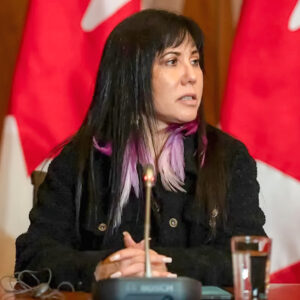
HAGERSVILLE – A major study released on May 30 offers hopeful recommendations for First Nations education programs in Ontario, focusing on children with special needs.
The review comes out of a human rights legal challenge regarding the unequal and inadequate special education services provided to First Nation children living on reserve in Ontario launched by the Mississaugas of the New Credit First Nation (MNCFN) in 2009. MNCFN helped co-ordinate the review. Stacey LaForme, Chief of MNCFN, believes the report is a sign of hope for the future.
“This is a good example of the good things that can happen when the government works with First Nations, not against us,” said LaForme. “We are focusing on solutions, and on taking action now. If the governments continue to work with us, we can help give our children a better future starting today.”
The review process was chaired by First Nation education expert Peter Garrow, former education director of the Assembly of First Nations (six years) and Ahkwesãhsne Mohawk Board of Education (eight years) and the current chair of the Indigenous Trustee Council of the Ontario Public School Board Association. The recommendations were brought together from First Nations educators, education directors, and administrators from across the province who contributed their knowledge and experience to the review and from reports by First Nations organizations.
“Too many First Nations children don’t get the support they need. We’ve presented a potential pathway to fix that and to start that process right now,” said Garrow. “The report includes recommendations to both the federal and Ontario governments.”
One in three First Nations students living on reserve attend provincially funded schools. School Boards charge fees for these students, sometimes so high that a First Nation student with special needs cannot go to school if they remain on reserve. The report recommends amending provincial education regulations to prevent these high charges and the serious barriers they create. It also recommends amendments to provincial education regulations to support equity for First Nations students, improve information sharing with First Nations, and significantly strengthen the role of First Nations in provincially funded schools.
“Ontario could make a huge and positive difference with just a few tweaks to its education regulations. This can happen before our kids go back to school in September,” said Garrow. “Some of the recommendations are a bit complicated, but some are straightforward. Big progress can be made in just a few months if the governments make this a priority.”
MNCFN’s legal case at the Canadian Human Rights Tribunal is on hold while First Nations work with federal and provincial governments to try to identify and implement the reforms needed to improve the special education services available to First Nations students on reserve. The Canadian Human Rights Tribunal issued a ground‐breaking decision last year in a similar case about child welfare, ruling that Canada discriminates against First Nations children by failing to provide the same level of child welfare services that exist elsewhere.
The federal government has promised equality for First Nations students. Through this report we have collectively come up with some solutions to make that a reality now,’ said LaForme. “Our children deserve the opportunity to attain at least the same level of educational success as non‐Indigenous children, and the sooner that is achieved, the sooner we all benefit.”






